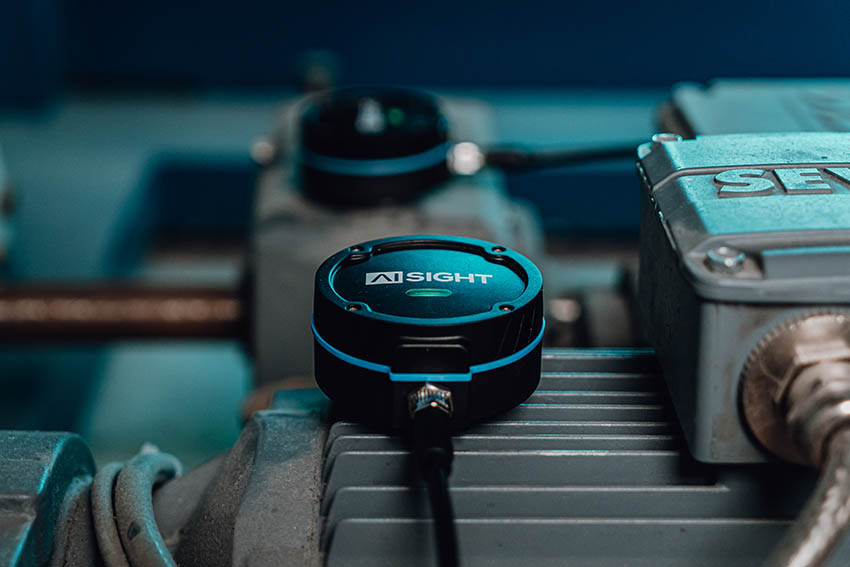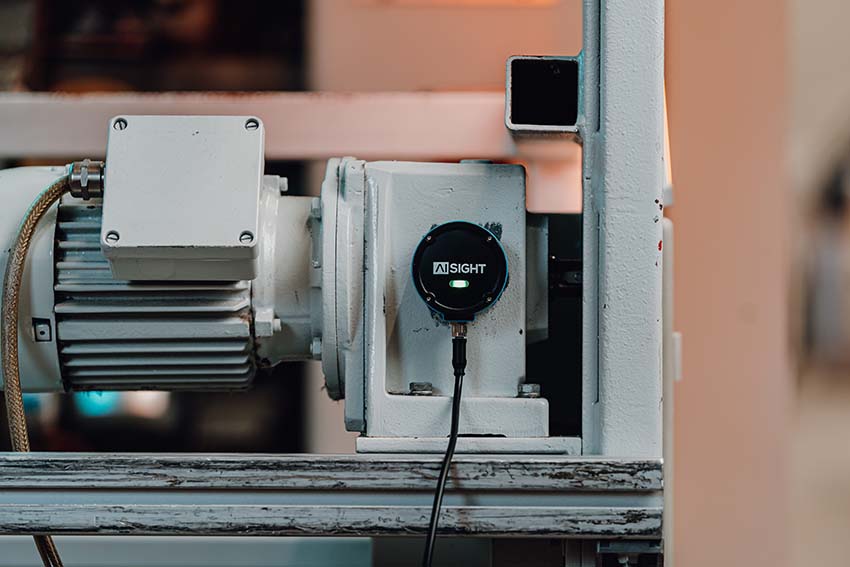AiSight makes unlimited machine uptime a reality. Founded in 2018, based on the potential for advanced AI to fill the need for an easy-to-integrate predictive maintenance solution, AiSight has developed a solution that goes beyond predictive maintenance, into the realm of machine diagnostics. Today, as part of Sensirion Connected Solutions, AiSight’s 24/7 machine-monitoring solution has the ability to not only predict malfunctions and their root causes, but to detect process errors, and protect overall machine health.
Interview with Matthias Auf der Mauer, Founder and CEO at Aisight.
Easy Engineering: What are the main areas of activity of the company?
Matthias Auf der Mauer: We provide a complete, plug-and-play predictive maintenance solution for industry—including both sensors and the software to interpret sensor readings.
We founded AiSight based on the challenges I saw facing maintenance practices in the industry. Before AiSight, I’d worked as a hardware engineer on air quality sensors, and as Head of IoT, so the potential for connected sensors to provide the solution to those problems was clear.
At AiSight, we’ve developed a versatile and easy-to-implement predictive maintenance solution. It prevents unplanned downtime on all rotating equipment, in many industries, with minimal demands on existing infrastructure.

E.E: What’s the news about new products?
M.A.d.M: Since day one, we’ve made our predictive maintenance solution easy to install, easy to use, and easy to use everywhere. We’re only continuing to improve on those strengths in the future.
Our user interface, for example, is very easy to use and runs in browser. We’re currently beta testing what we believe will be an even better UI. It builds on the existing dashboard’s strengths—early alerts, deep analytics, intuitive interface—and adds new features like the ability to compare vibration patterns. Plus, we’ve optimized it for mobile devices. Maintenance techs now have access to our machine diagnostics wherever they go.
On the hardware side, we have a list of new products in the pipeline, which aim at making the Aion sensor nodes even more durable and easier to set up and use. Besides that we are working on making it available for a larger group of equipment, and use cases beyond rotating equipment.
E.E: What are the ranges of products?
M.A.d.M: We provide a complete, plug-and-play predictive maintenance solution for industry—including both sensors and the software to interpret sensor readings.
Our Aion sensor node combines a triaxial vibration sensor, a triaxial magnetic field sensor, and a temperature sensor, in one compact, waterproof, and dustproof case. These feed machine behavior data to cloud-based machine-learning algorithms, which feed our user interface with early alerts of machine damage, overviews of machine condition, and advanced analytics, including root-cause analysis of faults and suggested remedies.
This is all one integrated, and very easy to set up, solution. Sensor nodes attach to any machine with magnets; they connect securely to the cloud through wi-fi. Our machine-learning algorithms come pre-trained for each machine type; they’re prepared to deliver analytics and alerts on day one, all through our in-browser dashboard software.

E.E: At what stage is the market where you are currently active?
M.A.d.M: AiSight is now established in markets across the EU and growing its presence in the US.
These are two of the very largest markets in the world—both advanced economies, with large industrial bases focused on high-value manufacturing. Production processes are heavily automated; productivity is dependent on optimizing equipment efficiency. This is a great environment for our predictive maintenance solution to make a difference.
The added value of our solution depends on the state of equipment and our customers’ maintenance strategies. These factors vary a lot depending on the markets we are operating in.
E.E: What can you tell us about market trends?
M.A.d.M: The market for predictive maintenance is growing and is going to continue growing. Several factors contribute to this growth, including the need to reduce downtime and costs. The Covid-19 pandemic disrupted manufacturing, the same as businesses everywhere. In the wake of the pandemic, manufacturers have been concentrating on improving processes and integrating technologies like machine learning and AI. The upshot is, manufacturing systems then become more agile and companies are able to increase their production capacity.
This is, of course, good! As more manufacturers realize the benefit of digital transformations, we only tip further into Industry 4.0, and those benefits become impossible to downplay.
And making that digital transformation is only becoming more urgent. Wherever we look, we see broken supply chains, labor shortages, high energy prices, climate change—pain points for any manufacturer, and pain points that new digital solutions aim to alleviate. AiSight’s predictive maintenance solution does just that.
E.E: What are the most innovative products marketed?
M.A.d.M: Our solution provides warning of breakdowns weeks—or even months—in advance, with root-cause analysis. In other words, as soon as our algorithms detect vibration patterns indicative of worsening machine condition, they issue an alert. The alert contains information on not only which machine’s condition is deteriorating, but which part of that machine is deteriorating, how it’s deteriorating, how long you have to act, and what you can do about it.

I believe the next step will be going from improving single processes like maintenance towards improving both holistic processes and machine parameters in real-time, while still in production.
E.E: What estimations do you have for the rest of 2022?
M.A.d.M: High energy prices are a fixture in the news. This will be true as long as the weather is cold and the geopolitical situation is hot—and possibly for a lot longer. This is hard on just about everyone, and manufacturers are no exception.
As we deal with high energy prices and the transition away from fossil fuels, we’re going to see more interest in energy sources and technology that improve efficiency, lower costs, and generally make that transition easier. We’ve recently had success doing just that at a heat plant in Hamburg. So, we expect to see a lot more interest in predictive maintenance used as a plug-in energy leaks.

